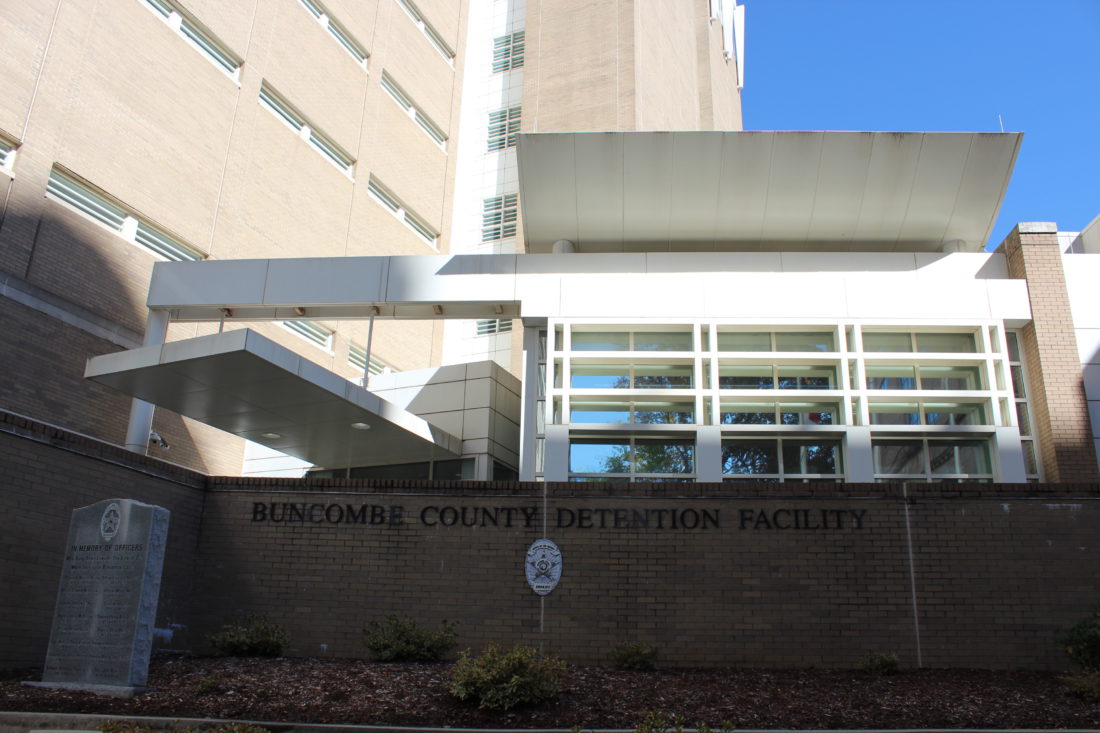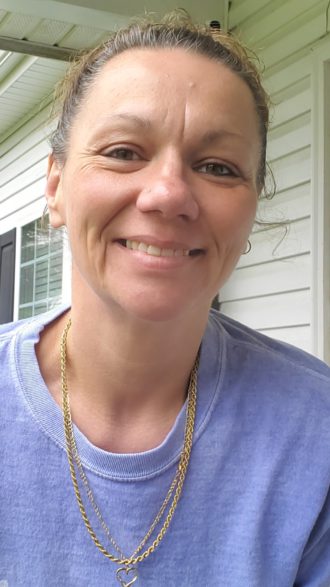For most people with opioid addiction, a night in jail means painful withdrawal symptoms: sweats, aches, chills and digestive problems. Even those who are taking medications to help them live with addiction are routinely denied those drugs, which can alleviate the misery of detoxification and withdrawal.
But for inmates at the Buncombe County Detention Facility, that changed last month. A new program allows those who are already receiving medication-assisted treatment, or MAT, to continue while incarcerated; those who haven’t been in treatment but want to start receiving medication are given that option.
Going cold turkey, says Sue Polston, executive director of Sunrise Community for Recovery and Wellness, is “just pure hell. Many people say they’d rather die than go through that; medications help people deal with withdrawal and suppress cravings.” The Asheville-based nonprofit provides peer support to inmates and others.
The issue, she continues, has a long history of stigmatization. “People thought those with addiction should suffer for their sins, but I see a huge shift for the better in recent years. People are beginning to see addiction as an illness, not a moral failing.”
Buncombe County officials conducted a study to find out how much of a problem opioid addiction is locally, both among the jail population and those who have been released. Coordinating data from the Sheriff’s Office, the Department of Health and Human Services and the Register of Deeds, officials were able to calculate how many released inmates have died from overdoses.
In 2018, Buncombe County had 111 drug-related deaths; 88 of them involved opioids, and 46 of those people had spent time in the county detention facility. While some of those deaths occurred 10 years after release, many were within the first three months, and the first 72 hours was the most critical period, says Sarah Gayton, the Sheriff’s Office’s community integration and MAT services director.
“Finding these statistics was an ambitious process, to zero in with this level of specificity,” says Aaron Sarver, public information officer for the Sheriff’s Office. But thanks to that effort, he continues, “Right now, Buncombe County has the most robust program in the state.”
Saving lives
Like most places, Buncombe wasn’t tracking those numbers before the MAT program was established, says Gayton. That changed last summer, when questions about whether inmates were using and, if so, whether they were already in treatment, were added to the intake interview. People who self-report are given an overdose treatment kit upon release, but even more importantly, a peer support person from Sunrise Community is available to inmates for up to a year after their release.
Equipping released inmates with overdose treatment kits will save lives, because people dealing with addiction tend to seek out and use substances at the same level as they did before incarceration, Gayton explains. But since the body’s tolerance level has been lowered in the interim, it increases the likelihood of overdosing.
“That first 72 hours is critical,” stresses Polston. “People need to be followed.”
According to a study in the medical journal JAMA Psychiatry, a comprehensive MAT program in Rhode Island jails that is similar to the one implemented here resulted in significantly fewer deaths. After their release, all inmates were given overdose treatment kits, and a year later, the death toll had been reduced by nearly two-thirds.
In most jails and prisons, people with addiction who are already on MAT at the time of their arrest are denied their medication because it’s considered contraband, and officials fear that inmates will traffic in it inside the jail. But this will change, Polston believes, as people’s attitudes toward addiction shift.
Buncombe County Sheriff Quentin Miller believes MAT is a more humane and sensible way to deal with the opioid crisis.
“We’ve tried to arrest our way out of the drug epidemic for decades, and it hasn’t worked,” he said in a statement. “There must be consequences for people’s actions, but part of our solution has to be providing people access to medication and treatment. We must offer people a chance to get themselves to a better place, and programs like MAT are proven to reduce recidivism.”
A cost-effective strategy
According to a paper published by The Pew Charitable Trusts in 2018, less than 1% of the more than 5,000 prisons and jails in the United States, which collectively house more than 2 million inmates, allow access to FDA-approved medications — methadone, buprenorphine or naltrexone — even though medical societies, addiction experts and correctional health organizations overwhelmingly support the use of these treatments. Some jails do offer one or two of them; so far, Rhode Island is the only state that has implemented the use of all three medications in all its jails and prisons.
While the reasoning behind denial is often that treatment is cost prohibitive, a report by The New England Comparative Effectiveness Public Advisory Council found that future savings in health care and incarceration expenses outweighed the additional upfront costs.
In October 2018, the National Sheriffs’ Association and the National Commission on Correctional Health Care issued a report titled “Jail-Based Medication-Assisted Treatment: Promising Practices, Guidelines and Resources for the Field.”
In the foreword, Jonathan F. Thompson, the association’s executive director and CEO, wrote, “Jails not only oversee individuals struggling with substance use disorders and withdrawal, but are also in a unique position to initiate treatment in a controlled, safe environment.”
The report cites a Bureau of Justice Statistics finding that nearly two-thirds of the inmate population meet the criteria for drug dependence or abuse. MAT can help these inmates recover while reducing recidivism and lowering drug overdose mortality rates, the report concluded.
Harm reduction first
Even before the local program was implemented, Buncombe County had three special case managers for people with addiction and mental health issues. The jail has now hired an additional case manager; there are also volunteer opportunities that, before the COVID-19 pandemic, had involved 12-step meetings and other forms of group support.
“They’re now looking at other ways to connect people,” says Gayton.
Without state funding — $283,000 so far — this program wouldn’t be possible, she points out. “The state has invested in this, and they’re following it closely.”
Buncombe County has been working on harm reduction for a while now, adds Gayton, and this program builds on those services. The county HHS has operated a syringe program since last August, in conjunction with peer support services through Sunrise Community. Programs like these improve outcomes by offering testing, sterile injection equipment, links to care and recovery options, and naloxone, a drug that almost instantly reverses the effects of opioid overdose.
As part of the MAT program, inmates leaving the detention center are given an information sheet explaining basic harm reduction strategies: how to prevent overdose and where to go for treatment, as well as some needle exchanges and opportunities for communicable disease testing, notes Gayton. Even if people aren’t ready to quit, she emphasizes, these strategies can increase their chances of survival.
Polston, meanwhile, believes the second benefit of the MAT program is that it will enable more people to enter long-term recovery. “People can live a normal life on these medications,” she points out. “They can go to work, parent their children, do all the things people in recovery do.”
Polston herself has been in recovery from addiction for nearly seven years.
“It took me 12 years to get it right,” she reveals. “Addiction is difficult to treat at best, and recovery is different for everyone. Even MAT is not the solution for everyone. Nothing is universally successful, but the good news is that recovery does happen.”





It’s about time I’ve been locked up numerous times and had to come off heroin and fentynal cold turkey and it’s true you would rather die as to go through it so any improvements they make on helping inmates to come off the drugs is wonderful thank you guys so much
Lol—“locked up numerous times”. Apparently the “you would rather die” didn’t include being a multiple repeat offender.